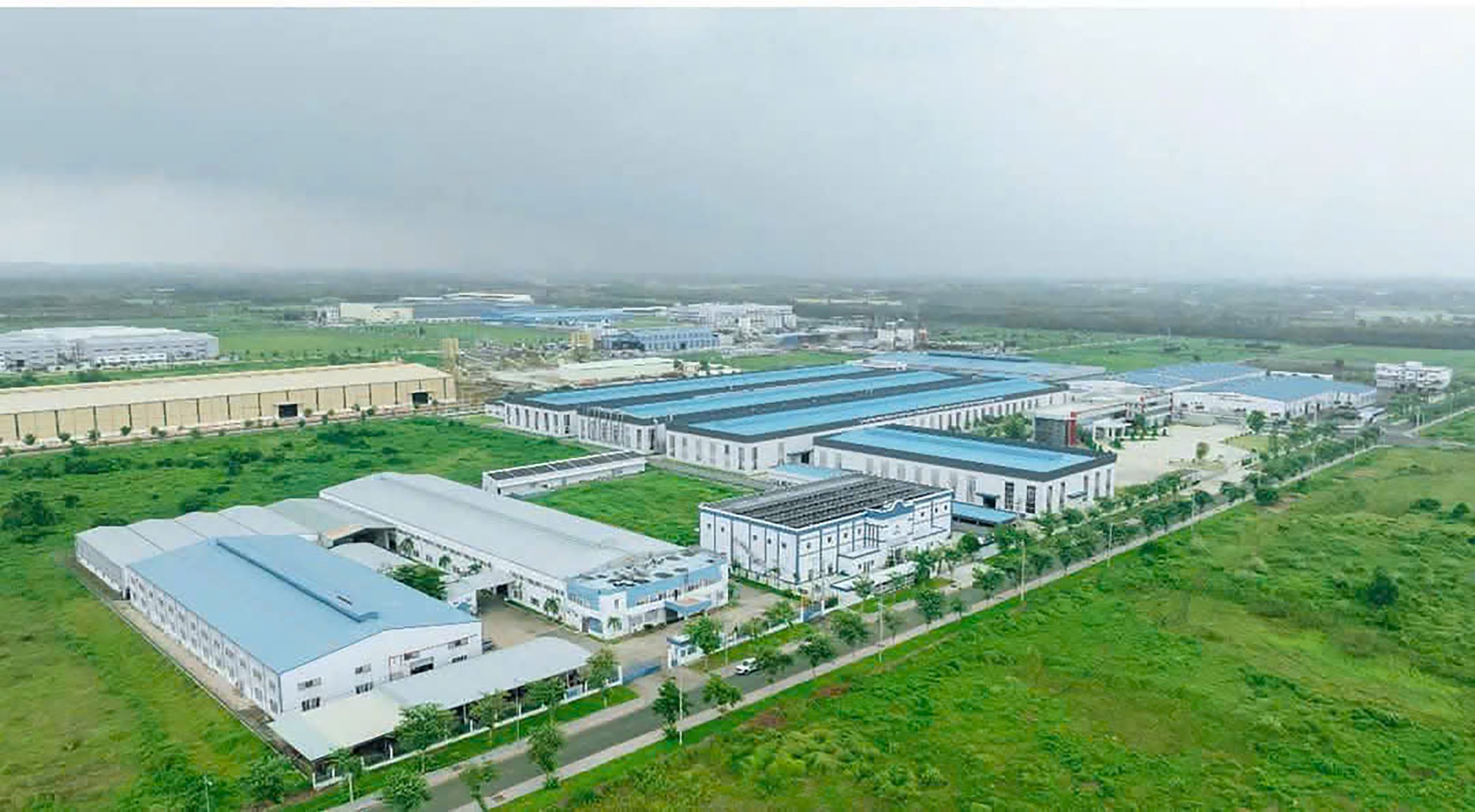 |
| The competitiveness of Ba Ria-Vung Tau's industry is among the top in the country. In the photo: A corner of Dat Do 1 Industrial Park, Long Dat district. |
Immediately after liberation, many policies and solutions on economic growth and ensuring social security were implemented by the Party Committee and the government of Ba Ria-Vung Tau province, gradually affirming its role and position in the country's development process.
1. On the way to Chau Duc, there is a right turn through Hoa Long commune, a wide asphalt road, the way to Long Phuoc commune, Ba Ria city. Anyone passing by here will see a monument, although not imposing, but reminding everyone that here was a suicide squad that fought the enemy to the last drop of blood. Ten revolutionary soldiers and militiamen sacrificed their lives. To remember and honor them, Long Phuoc people named the memorial stele Ong Dia bridge.
Although I am not very familiar with this land, the names “Long Phuoc Tunnels”, “Ong Dia Bridge”, “Bung Bac” always evoke a sense of sympathy, pride and honor in my flesh. It is also natural that since the time of fighting against the French and then the Americans, the place names here have resounded with both tragedy and heroism, not only for the people of Ba Ria-Vung Tau but also for the people of the Southeast region in particular and the people of the whole country in general.
It is hard to find a countryside that has changed as miraculously as Long Phuoc. Right after liberation, the people joined hands to build Long Phuoc more beautiful and more dignified than before. The land, which was famous for its delicious fruit specialties, which were mentioned in the folk song and proverb "Hoi Bai shrimp and fish, Long Phuoc bananas and mangoes", was rebuilt. The barbed wire fences and minefields of the past were replaced by solid houses and lovely villas in lush gardens of banana, mango, durian, star apple trees...
Long Phuoc is increasingly spacious and clean thanks to the new rural construction program. The economic structure has changed dramatically. The agricultural rate has decreased from 98% to 76%. Services and production facilities are increasingly expanding and account for 24%. The commune has achieved 19/19 criteria for building a model new rural area. Traffic infrastructure has been invested and paved. The average income per capita of the commune has also increased 21 times compared to the first years after liberation, reaching more than 92.4 million VND/person/year by the end of 2024 and there are no more poor households under national standards.
More than 30 years after leaving his hometown in Nghe An to live and work in this land, Mr. Nguyen Huu Hong probably never thought that one day he would build a large foundation and have his children study successfully like now. Not hiding his joy, Mr. Nguyen Huu Hong shared: "This is thanks to the new rural construction program, upgraded roads creating favorable conditions for people to invest in production, cultivation, and livestock. Trade is convenient, business is also increasingly prosperous."
2. Long Phuoc, like many other areas, has developed remarkably thanks to the province's correct policies and strategies as well as benefiting from investment resources for infrastructure that Ba Ria-Vung Tau has focused on implementing in recent times. Nearly 34 years since the province was established (August 1991), overcoming many difficulties and challenges, with the outstanding efforts of the Party Committee, government and people, the province has had a strong transformation. From a small special zone directly under the Central Government, Ba Ria-Vung Tau has become a province in the Southern Key Economic Zone with a high economic growth rate, and per capita income among the top in the country. The province has become one of the centers of marine economy and modern oil and gas industry in the country.
Former Provincial Party Secretary Tran Van Khanh recalled that right after the province was established, the provincial leaders realized that in order to accelerate the speed of socio-economic development, they must first focus resources on building infrastructure. The provincial Party Committee also organized Party Congresses at all levels, leading up to the 1st Congress, term 1992-1996. At this congress, many economic policies were proposed. That is "Striving to build Ba Ria-Vung Tau province with an economy that develops according to the structure of industry - service - agriculture; continuing to carry out economic innovation, developing multi-sector commodity production operating according to market mechanisms, with State management according to socialist orientation, expanding foreign economic relations...".
Ba Ria-Vung Tau has gradually taken on a new look. A series of projects to expand National Highway 55 and National Highway 56 from Ba Ria to Ngai Giao, Xuyen Moc, Binh Chau; then the Ngai Giao route connecting My Xuan has been invested in and built. Roads and bridges continue to be built through Long Son, Vung Tau City. Wherever the road is built, electricity is brought there. Many households living along the road have built new houses and opened shops. Goods circulate quickly and conveniently.
The 7th Provincial Party Congress identified 3 breakthroughs in mobilizing all resources to invest in the synchronous construction of a connected transport infrastructure system; focusing on implementing the Project to improve the quality of people's lives; the digital transformation program, smart cities. Building transport infrastructure with the motto "going first to pave the way" is also considered a breakthrough spearhead and a top priority of Ba Ria-Vung Tau, in which identifying regional connectivity as one of the key factors to promote the advantages of seaports.
And in just a short time, the province has invested and started a series of key transportation projects such as Bien Hoa-Vung Tau Expressway, DT994; Phuoc An Bridge, Con Dao Airport... These are considered the most important "main arteries" creating prosperity for Ba Ria-Vung Tau as well as the key economic region in the South in the near future.
3. In the process of implementing socio-economic development tasks, the potential and strengths of Ba Ria-Vung Tau have been gradually promoted and exploited to the maximum. The resolutions of the Provincial Party Congresses through each congress have determined the growth target of the locality associated with effectively exploiting the advantages and potentials of the marine economy, becoming a strong province in industry, seaports, port logistics services and tourism. Since then, the economic structure of the province has shifted towards industrialization and modernization, in line with the potential and advantages of the province, gradually reducing dependence on mining, oil and gas. Productivity, added value and competitiveness of economic sectors have been increasingly improved.
In addition to its traditional strengths, seaport and logistics services, with the strategic international role of the Cai Mep-Thi Vai port cluster, are gradually becoming a new key economic sector of the province, while actively contributing to the export-oriented economic strategy of the entire Southern Key Economic Zone at present, as well as in the coming decades.
The competitiveness of the industrial sector is among the top in the country. The industrialization model has shifted from labor-intensive industries to using advanced, modern technology with high productivity and added value. Service industries, especially maritime transport, logistics and especially tourism, are gradually becoming key economic sectors. In particular, the urbanization rate of Ba Ria-Vung Tau has reached more than 60% compared to the national average of 40%.
The economy has developed, social security has been paid attention to, and the material and spiritual life of the people has been constantly improved and raised. In 1992, the average income per capita excluding oil and gas was about 450 USD/year; by 2019, it had increased to 6,800 USD/year, 12 times higher than in 1992, 4 times higher than the national average, and this target will reach 9,012 USD/person/year by 2024. The province is also among the top localities contributing the largest budget in the country.
According to Chairman of the Provincial People's Committee Nguyen Van Tho, to create growth momentum in the coming time, the key task and breakthrough identified by the province in the approved Provincial Planning for the period 2021-2030, with a vision to 2050, is to basically form a synchronous, modern, and smart infrastructure framework, focusing on transport infrastructure, urban infrastructure, energy infrastructure, digital infrastructure, social infrastructure, irrigation infrastructure, disaster prevention, and climate change adaptation.
NGO GIA
Source: https://baobariavungtau.com.vn/kinh-te/202504/ky-niem-50-nam-ngay-giai-phong-tinh-ba-ria-vung-tau-274-kinh-te-phat-trien-ba-ria-vung-tau-thanh-noi-dang-song-1040917/





![[Photo] The parade took to the streets, walking among the arms of tens of thousands of people.](https://vphoto.vietnam.vn/thumb/1200x675/vietnam/resource/IMAGE/2025/4/30/180ec64521094c87bdb5a983ff1a30a4)
![[Photo] Chinese, Lao, and Cambodian troops participate in the parade to celebrate the 50th anniversary of the Liberation of the South and National Reunification Day](https://vphoto.vietnam.vn/thumb/1200x675/vietnam/resource/IMAGE/2025/4/30/30d2204b414549cfb5dc784544a72dee)
![[Photo] Cultural, sports and media bloc at the 50th Anniversary of Southern Liberation and National Reunification Day](https://vphoto.vietnam.vn/thumb/1200x675/vietnam/resource/IMAGE/2025/4/30/8a22f876e8d24890be2ae3d88c9b201c)
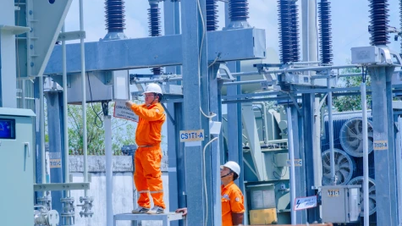


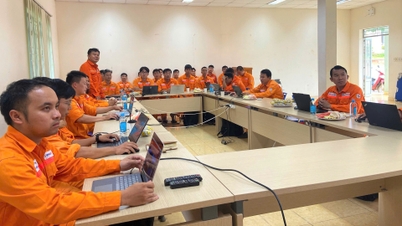

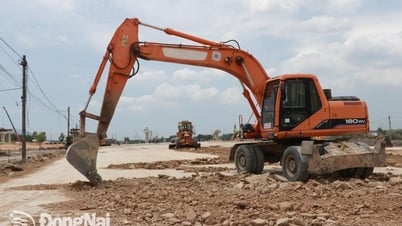





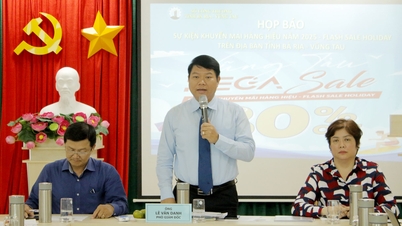




![[Photo] Performance of the Air Force Squadron at the 50th Anniversary of the Liberation of the South and National Reunification Day](https://vphoto.vietnam.vn/thumb/1200x675/vietnam/resource/IMAGE/2025/4/30/cb781ed625fc4774bb82982d31bead1e)














































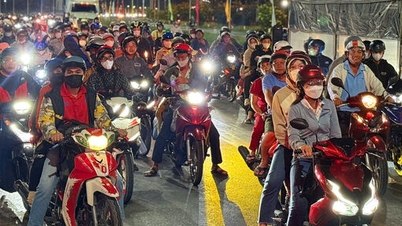



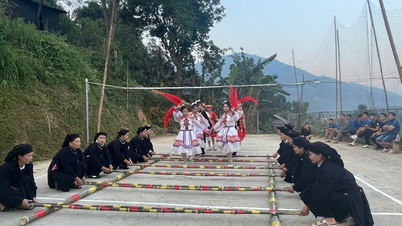














Comment (0)